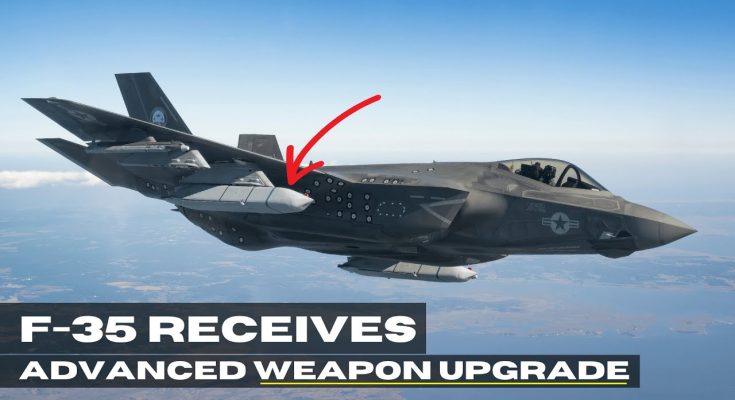The F-35B, a variant of the F-35 Lightning II stealth fighter, has recently undergone a significant upgrade to its weapon systems, further enhancing its capabilities in modern combat scenarios. This advanced weapon system upgrade is a crucial part of the ongoing evolution of the F-35 fleet, aiming to improve operational effectiveness, lethality, and survivability in complex battle environments.
Overview of the F-35B
The F-35B is primarily used by the United States Marine Corps (USMC), the United Kingdom’s Royal Navy, and several other nations. Unlike the conventional F-35A and F-35C variants, the F-35B is equipped with Short Takeoff and Vertical Landing (STOVL) capabilities, making it suitable for operations from smaller, amphibious assault ships, aircraft carriers, and austere airfields. This flexibility allows the F-35B to serve in a variety of roles, including close air support, interdiction, intelligence, surveillance, reconnaissance (ISR), and air superiority.
Weapon System Upgrades
The recent upgrade to the F-35B’s weapon systems comes as part of the ongoing Block 4 modernization program. This program aims to enhance the jet’s capabilities by improving its avionics, sensor systems, and weaponry. The key upgrades to the F-35B’s weapons suite include the integration of new precision-guided munitions (PGMs), enhancements to existing weapons, and an increase in the overall payload capacity of the aircraft.
Enhanced Weapon Integration
One of the most significant aspects of this upgrade is the increased ability of the F-35B to carry and deploy a broader range of munitions. Among the new systems integrated into the F-35B are advanced air-to-ground and air-to-air missiles, such as the Joint Direct Attack Munition (JDAM) and the Advanced Anti-Radiation Guided Missile-Extended Range (AARGM-ER). The addition of these weapons gives the F-35B greater flexibility in engaging a variety of threats, including enemy air defenses, radar systems, and ground targets.
Furthermore, the integration of the StormBreaker Smart Weapon provides precision strike capabilities in contested environments. The StormBreaker is designed to operate in all weather conditions, using a combination of radar, infrared, and laser guidance to strike targets with high accuracy, making it particularly effective in scenarios where targeting information may be difficult to obtain.
Increased Payload Capacity
The upgrade also focuses on increasing the F-35B’s overall weapons loadout. While the F-35B’s smaller airframe traditionally limited its payload compared to other F-35 variants, the Block 4 upgrade allows for more effective utilization of the aircraft’s internal and external hardpoints. This ensures that the F-35B can carry a heavier payload while maintaining its stealth profile when necessary. The internal weapons bay allows the F-35B to carry up to two Joint Strike Missiles or other air-to-surface munitions without compromising its radar signature, a key advantage in denying adversaries the ability to detect or intercept the aircraft.
Improved Operational Flexibility
Another aspect of the upgrade involves the integration of advanced software that improves the F-35B’s ability to operate in joint and coalition environments. The new software allows for enhanced communication and data-sharing capabilities, ensuring that the aircraft can seamlessly operate alongside other fifth-generation platforms and legacy systems. This collaboration allows for more effective coordination between air, ground, and naval forces, improving the overall effectiveness of military operations.
Future Implications
This advanced weapon system upgrade for the F-35B represents a significant leap forward in terms of operational flexibility, lethality, and survivability. With these enhanced capabilities, the F-35B is now more than ever prepared to face a wide range of modern threats across multiple domains, whether they be air, sea, or land-based. The ongoing modernization of the F-35 fleet ensures that the aircraft remains a cornerstone of modern military operations for years to come, providing advanced capabilities to operators worldwide and reinforcing the United States’ and its allies’ strategic advantage in global defense operations.
In conclusion, the F-35B’s advanced weapon system upgrade significantly bolsters its operational flexibility, payload capacity, and lethality, ensuring it remains a vital asset in both tactical and strategic military operations.



